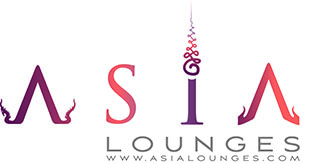When it comes to the finest gem quality blue sapphires in the world, nothing can compare with the best stones from Kashmir in northern India, and its neighbor to the east, Burma. Sapphires were first discovered in Kashmir around the year 1880, in the region known as Padar. Mining activity went on for several decades, but the finest material came out within the first thirty years. By contrast, Burma has been producing sapphires from several localities for well over 1,000 years.
The original discovery in Kashmir was made by a band of traders from Afghanistan on their way to Delhi. Originally traded for a few bags of salt, they were eventually estimated to be worth $3,000,000 in the 1930's. Today they would be priceless.
Due to the shape of the natural sapphire crystals from Kashmir, many gems have a rather deep cut. It is common to see fine Kashmir blue sapphires cut as a “sugarloaf” cabochon to retain weight. It is the presence of very fine and evenly distributed silk that gives Kashmir sapphires their famous velvety look.
Burma, which is today called Myanmar, has several important locations that produce sapphire. The most famous is the Mogok gem tract which has a rich history of production dating back several hundred years.
Sapphires from Burma were not recognized for their superior quality until the 1950's, after which their value and demand has risen dramatically.

A fine example of Natural Unheated Cornflower Blue Burmese Sapphire that is unfortunately no longer in our collection.
But what exactly is it that makes blue sapphires form Kashmir and Burma so superior to gems from any other location? In visual terms it is what is known as color saturation. Burmese and Kashmir sapphires possess the very highest concentration of blue color possible. The only way to properly understand this is to see the very best of Kashmir or Burmese sapphires side by side with the best from any other source in the world.
To illustrate this point, Kashmir and Burmese fine blue sapphires consistently yield the highest prices at the top international auction houses around the world. The record is currently held by a Burmese gem that sold for over US$45,000 per carat in 1988. So, proof of Burmese or Kashmir origin has become a critical point in determining the value of the gem being sold.
Modern gemological technology has made it possible to determine the origin of a gemstone through sophisticated testing methods. The demand of the marketplace has put a premium value on gemstones from these localities, so laboratories have stepped in and provided the gem trade with certificates of origin, a sort of pedigree for certain gemstones. Without this pedigree, or proof of origin, one can not expect to fetch the highest price possible for a blue sapphire, no matter how high its quality.
Production from Kashmir has been virtually nothing for the past several decades, making fine sapphires from this source nearly impossible to find. Burma however, does continue to produce excellent quality sapphires to this day, but in very small quantities.
©Jeffery L Bergman, SSEF SGC

